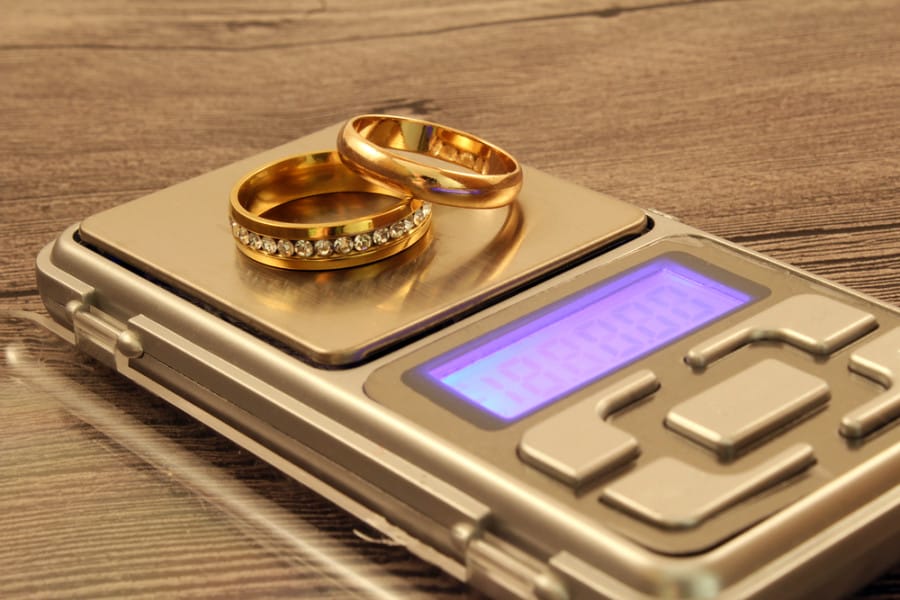Reasons Why Jewellery Is A Wise Investment
Have you ever thought about the dazzling jewels that embellish your hands or adorn your neck as more than just decorations, but as a smart financial investment? Beneath the glimmer and charm of jewelry lies a potential goldmine for savvy investors. But what turns a piece of jewelry from a mere adornment into a valuable asset in your investment portfolio?
In this discussion on jewelry as an investment, we explore the art of selecting pieces that not only hold their value but can also prove their authenticity over time, offering a potentially profitable return on investment. By focusing on understanding value retention, evaluating quality and authenticity, and choosing the right types of jewelry to invest in, we will reveal how this radiant market can offer more than just visual delight but also a strategic financial gain.
Jewelry as a Valuable Investment
Investing in jewelry surpasses aesthetics; it can also be a shrewd financial decision. When you can identify pieces that retain their value and demonstrate their authenticity, you are setting the stage for a potentially profitable investment.
Understanding the Preservation of Value
Materials: The materials utilized in jewelry significantly influence its ability to maintain value over time. Here’s a brief overview:
|
Material |
Characteristics | Value Retention |
|---|---|---|
| Gold | Durable, classic | High |
| Platinum | Rare, strong | Very High |
| Diamonds | Timeless, in demand | High |
| Gemstones | Variability in value | Dependent on rarity & quality |
Factors like brand reputation and historical significance can further elevate a piece’s long-term value. Limited editions or items from esteemed designers like Cartier or Tiffany & Co. often carry a premium that may appreciate over time.
Market Demand: Similar to any investment, market demand is fickle yet crucial. Pieces that are universally desired, such as diamond engagement rings, tend to uphold their value better due to consistent high demand.
Assessing Quality and Authenticity
Quality: The quality of the jewelry you invest in is paramount. Always look for pieces with:
- Outstanding craftsmanship
- High-quality materials
- Timeless design
Examining hallmarks and engravings can offer you insights into the metal’s purity and the piece’s authenticity.
Authenticity: Ensuring the authenticity of jewelry investments is crucial. You should:
- Secure certifications (e.g., GIA for diamonds)
- Engage trustworthy dealers with proven reputations
- Consider assessments from independent, certified gemologists
Remember, having documentation verifying the authenticity and quality of your jewelry not only provides peace of mind but also acts as evidence of value if you opt to sell in the future.
Types of Jewelry to Consider for Investment
When choosing jewelry for investment purposes, concentrate on pieces that possess intrinsic and enduring value. This often revolves around the materials they are crafted from and their historical significance.
Diamonds and Precious Stones
Investing in diamonds and precious stones like sapphires, emeralds, or rubies can be a prudent decision due to their timeless appeal and durability. Seek high-quality pieces with authenticity certificates that validate their grade and value. The 4Cs—cut, clarity, color, and carat weight—are vital in determining a diamond’s value. For other precious stones, their source, color purity, and transparency are crucial value determinants.
- Cut: Impacts brilliance and fire
- Clarity: Indicates purity
- Color: Scarcer colors command higher prices
- Carat weight: Measures apparent size
Gold and Platinum Pieces
Gold and platinum are highly coveted metals due to their rarity and resistance to tarnishing. They retain value well and are easily liquidated. The value of gold and platinum jewelry is partially influenced by the prevailing market rates of these metals.
- Gold: Often valued by karat purity (24K, 18K, 14K, etc.)
- Platinum: Heavier and frequently more valuable than gold
For both, craftsmanship and brand can significantly enhance the value. Ensure you purchase jewelry with hallmarks indicating the precise purity of the metal.
Vintage and Heirloom Collections
Vintage and heirloom jewelry pieces hold as much value in their history as in their construction. Look for items that are at least 30 years old, which qualify as vintage. Pieces with a rich history or those from a coveted era like the Art Deco period can be particularly valuable.
- Provenance: Documentation establishing history can boost value
- Condition: Well-maintained pieces are more sought after
Always have vintage and heirloom pieces appraised by a reputable expert to ascertain their market worth.
Strategies for Successful Jewelry Investments
Investing in jewelry demands savvy strategies to balance the dazzle of immediate gratification with the steady glow of long-term gain. Here’s how to sparkle in the realm of glittering assets.
Long-Term Holding versus Short-Term Trading
Long-term holding and short-term trading represent two distinct approaches to handling valuable pieces.
Long-term holding involves patiently acquiring items anticipated to appreciate in value over years or decades. This method suits individuals seeking stability, as jewelry with historical significance or from prestigious brands tends to incrementally appreciate. It also caters to those who cherish emotional connections, enabling the creation of heirlooms melding personal sentiment with financial acumen.
Conversely, short-term trading is for individuals with market acumen and the ability to forecast trends, allowing them to buy and sell jewelry for profit within shorter durations. Adaptability is vital in this approach, facilitating quick adjustments to market oscillations and capitalizing on short-term opportunities.
Diversification and Portfolio Management
Diversification and portfolio management are critical strategies in the realm of investments, with jewelry adding a unique and valuable dimension.
Achieving the right mix in your investment portfolio entails including pieces from different epochs, such as art deco and contemporary chic, thereby spreading risks across various eras. Incorporating diverse types of jewelry, like gold, diamonds, and other gemstones, further fortifies the portfolio.
Regarding managing a jewelry investment portfolio, conducting regular appraisals to keep abreast of each piece’s value is crucial for making well-informed decisions on when to buy or sell. Platforms like the Alloy App offer free appraisals when selling online.
Additionally, preserving the jewelry in good condition is essential to safeguard its value and longevity. This holistic approach to managing your jewelry investments ensures both growth and preservation of your portfolio’s value.
Conclusion: The Lucrative Returns on Jewelry Investments
Investing in jewelry transcends mere visual admiration, providing a concrete and potentially profitable financial voyage. By grasping the nuances of value retention, market demand, and the significance of quality and authenticity, investors can make prudent decisions that harmonize with their financial objectives and personal preferences.
Whether it’s the timeless allure of diamonds, the enduring value of gold and platinum, or the distinct charm of vintage and heirloom pieces, jewelry emerges as a multifaceted asset. Integrating jewelry into your investment portfolio not only diversifies your holdings but also injects a touch of elegance into your financial strategy.
Ultimately, armed with the right knowledge and approach, investing in jewelry can be an illuminating pursuit that blends the realms of style and finance, yielding an array of benefits that surpass mere surface radiance.

















